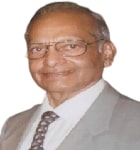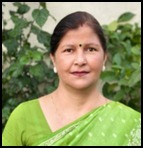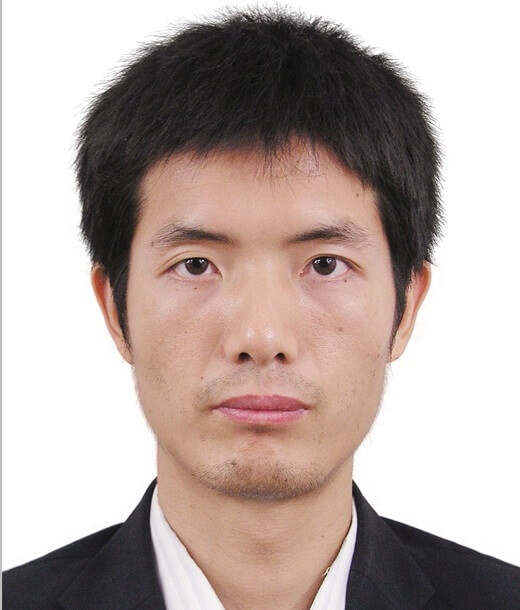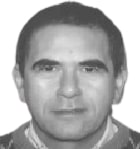An Overview of Strategies for Conceptualizing Derivative and their Applications in Daily Life for Secondary-Level Mathematics Students

DOI:
https://doi.org/10.54060/a2zjournals.jase.44Keywords:
Calculus, Conceptual understanding, Derivatives, Rates of change, VisualizationAbstract
Derivative is a foundational concept in calculus but can be challenging for secondary students to grasp conceptually. This paper provides an overview of research-backed strategies for developing a strong conceptual understanding of derivative. Visual and intuitive approaches are discussed, such as relating the derivative to real-world con-texts involving speed, growth, and modeling phenomena. The importance of multiple linked representations and building connections between graphical, numeric, verbal and symbolic perspectives is emphasized. Strategies for motivating learning through real-world applications and simulations relating concepts to students' lives are out-lined. Procedural expertise and conceptual mastery are cultivated together. The benefits of a conceptual learning, problem solving abilities, and STEM-related fields are noted. Curricular recommendations focus on conceptual exploration prior to for-mal definitions. Thus, the paper highlights best practices for conceptualizing deriva-tive through visual-intuitive, multi-representational and application-based ap-proaches to promote flexible, adaptive understanding and lay the groundwork for calculus success.
Downloads
References
P. W. Thompson, “Images of rate and operational understanding of the fundamental theorem of calculus,” Educ. Stud. Math., vol. 26, no. 2–3, pp. 229–274, 1994. https://doi.org/10.1007/BF01273664.
A. Orton, “Students' understanding of differentiation,” Educational studies in mathematics, vol. 14, pp. 235–250. https://doi.org/10.1007/BF00410540
J. Ferrini-Mundy and K. G. Graham, “Research in calculus learning: Understanding of limits, derivatives, and integrals,” in Research issues in undergraduate mathematics learning, J. Kaput and E. Dubinsky, Eds. Mathematical Association of America, pp. 31–45, 1994.
C. Rasmussen, “New directions in differential equations: A framework for interpreting students’ understandings and dif-ficulties,” The Journal of Mathematical Behavior, vol. 20, no. 1, pp. 55–87, 2001. https://doi.org/10.1016/S0732-3123(01)00062-1.
J. Stewart, “Calculus: Concepts and contexts,” (4th Ed.). Cengage Learning.
H. Anton, I. Bivens, and S. Davis, Calculus: Early transcendentals. John Wiley & Sons, 2012.
R. Larson, B. H. Edwards, “Calculus (10th ed.),” Cengage Learning, 2014.
P. Drijvers, L. Ball, B. Barzel, M. K. Heid, Y. Cao, and M. Maschietto, “Uses of Technology in Lower Secondary Mathematics Education: A concise topical survey,” in ICME-13 Topical Surveys, Cham: Springer International Publishing, pp. 1–34, 2016. https://doi.org/10.1007/978-3-319-33666-4_1
M. Wewe, “The profile of students’ learning difficulties in concepts mastery in calculus course,” Desimal J. Mat., vol. 3, no. 2, pp. 161–168, 2020. https://doi.org/10.24042/djm.v3i2.6421.
C.-H. Huang, “Engineering students’ conceptual understanding of the derivative in calculus,” World Transactions on Engi-neering and Technology Education, vol. 9, no. 4, pp. 209–214, 2011.
J. P. Brown, “Real-world task context: Meanings and roles,” in Lines of Inquiry in Mathematical Modelling Research in Ed-ucation, Cham: Springer International Publishing, pp. 53–81, 2019. https://doi.org/10.1007/978-3-030-14931-4_4
“Principles to actions: Ensuring mathematical success for all,” Author, 2014.
C. Hyer and A. Gardner, Discovering the derivative can be invigorating: Mark’s journey to understanding instantaneous ve-locity. Theses and Dissertations, 1173. 2007. https://scholarsarchive.byu.edu/etd/1173
A. V. Maltese and R. H. Tai, “Eyeballs in the Fridge: Sources of early interest in science,” Int. J. Sci. Educ., vol. 32, no. 5, pp. 669–685, 2010. https://doi.org/10.1080/09500690902792385
Education for life and work: Developing transferable knowledge and skills in the 21st century. National Academies Press, 2012.
J. B. Chauvot, “Grounding practice in scholarship, grounding scholarship in practice: Knowledge of a mathematics teacher educator-researcher. Teaching and Teacher Education,” An International Journal of Research and Studies, vol. 25, no. 2, pp. 357–370, 2009.
V. J. Katz, (Ed.). “ A history of mathematics: An introduction,” Addison-Wesley.
C. B. Boyer, “ A history of mathematics,” Wiley, 1968
A. R. White, The principles of philosophy: Part 2, De mundo: Translation, with introduction and notes by. 1961.
G. W. Leibniz, “Discourse on metaphysics,” Louis Billaine, 1686.
C. H. Edwards, “The historical development of the calculus,” Springer, 1979. https://doi.org/10.1007/978-1-4612-6230-5
D. Tall, How humans learn to think mathematically: Exploring the three worlds of mathematics. Cambridge University Press, 2013.
B. Cornu, Advanced mathematical thinking. Dordrecht, Kluwer, pp. 153-166, 1991.
K. Atit, D. H. Uttal, and M. Stieff, “Situating space: using a discipline-focused lens to examine spatial thinking skills,” Cogn. Res. Princ. Implic., vol. 5, no. 1, p. 1-16, 2020. https://doi.org/10.1186/s41235-020-00210-z
R. Netz, “The generation of archimedes,” in A new history of Greek mathematics, Cambridge: Cambridge University Press, pp. 107–220, 2022. https://doi.org/10.1017/9781108982801.004
J. Stillwell, “Mathematics and its history,” Springer Science & Business Media, 2010.
C. Cullen, “Astronomy and mathematics in ancient China: The Zhou bi Suan Jing,” Journal for the history of astronomy, vol. 29, no. 96, pp. 553–578, 1996.
G. G. Joseph, “The crest of the peacock: Non-European roots of mathematics,”. Penguin. 2000.
E. T. Bell, “The development of mathematics,” Courier Corporation, 2008.
L. Schwartz, “Théorie des distributions,” Annales de l'Institut Fourier, vol. 7, pp. 1-141. 1950.
D. Yang and S. J. Baldwin, “Using technology to support student learning in an integrated STEM learning environ-ment,” International Journal of Technology in Education and Science, vol. 4, no. 1, pp. 1–11, 2020.
K. S. Sofronas, T. C. DeFranco, C. Vinsonhaler, N. Gorgievski, L. Schroeder, and C. Hamelin, “What does it mean for a stu-dent to understand the first-year calculus? Perspectives of 24 experts,” J. Math. Behav., vol. 30, no. 2, pp. 131–148, 2011. https://doi.org/10.1016/j.jmathb.2011.02.001.
NCTM, “Principles and standards for school mathematics,” Author 2000.
J. Confrey, “Chapter 1: A review of the research on student conceptions in mathematics, science, and programming,” Rev. Res. Educ., vol. 16, no. 1, pp. 3–56, 1990.
https://doi.org/10.3102/0091732X016001003
J. Lobato, B. Rhodehamel, and C. Hohensee, “Noticing as an alternative transfer of learning process,” The Journal of the Learning Sciences, vol. 21, no. 3, pp. 433–482, 2012. https://doi.org/10.1080/10508406.2012.682189.
G. Lakoff, & R. Nunez, “Where mathematics comes from,” Basic Books, 2000.
R. Erens and A. Eichler, Views and beliefs in mathematics education. Freiburger empirische forschung in der mathemat-ikdidaktik. Wiesbaden: Springer Spektrum, 2015. https://doi.org/10.1007/978-3-658-09614-4_11
J. Park and K. Leatham, “The role of contextualized tasks and multiple representations in enhancing students’ un-der-standing of the derivative concept,” International Journal of Science and Mathematics Education, vol. 15, no. 2, pp. 285–306, 2017.
E. Deliyianni, A. Gagatsis, I. Elia, and A. Panaoura, “Representational flexibility and problem-solving ability in fraction and decimal number addition: A structural model,” Int. J. Sci. Math. Educ., vol. 14, no. S2, pp. 397–417, 2016. https://doi.org/10.1007/s10763-015-9625-6
J. Chatain et al., “Grasping derivatives: Teaching mathematics through embodied interactions using tablets and virtual reality,” in Interaction Design and Children, pp. 98-108, 2022. https://doi.org/10.1145/3501712.3529748
S. R. Jones, “An exploratory study on student understandings of derivatives in real-world, non-kinematics contexts,” J. Math. Behav., vol. 45, pp. 95–110, 2017. https://doi.org/10.1016/j.jmathb.2016.11.002.
X.-S. Yang, Engineering mathematics with examples and applications. Academic Press, 2016.
R. Larson, & R. P. Hostetler, “Calculus,” Houghton Mifflin, 1994.
E. M. Schwalbach and D. M. Dosemagen, “Developing student understanding: Contextualizing calculus concepts,” Sch. Sci. Math., vol. 100, no. 2, pp. 90–98, 2000. https://doi.org/10.1111/j.1949-8594.2000.tb17241.x.
E. Khasawneh, A. Hodge-Zickerman, C. S. York, T. J. Smith, and H. Mayall, “Examining the effect of inquiry-based learning versus traditional lecture-based learning on students’ achievement in college algebra,” Int. Electron. J. Math. Educ., vol. 18, no. 1, p. em0724, 2023. https://doi.org/10.29333/iejme/12715
C. Rasmussen, M. Stephan, and K. Allen, “Classroom mathematical practices and gesturing,” J. Math. Behav., vol. 23, no. 3, pp. 301–323, 2004. https://doi.org/10.1016/j.jmathb.2004.06.003.
P. W. Thompson and J. Silverman, “Making the connection: Research and teaching in undergraduate mathematics,” in Mathematical Association of, M. P. Carlson and C. Rasmussen, Eds. Amer-ica, pp. 43–52, 2008.
R. Larson, & B. Farber, “Elementary linear algebra,” Pearson Education, 2004.
B. L. Sherin, “How students understand physics equations,” Cogn. Instr., vol. 19, no. 4, pp. 479–541, 2001. https://doi.org/10.1207/S1532690XCI1904_3
M. K. Heid, “Resequencing skills and concepts in applied calculus using the computer as a tool,” J. Res. Math. Educ., vol. 19, no. 1, pp. 3-25, 1988. https://www.learntechlib.org/p/139005/.
L. C. McDermott, M. L. Rosenquist, and E. H. van Zee, “Student difficulties in connecting graphs and physics: Examples from kinematics,” Am. J. Phys., vol. 55, no. 6, pp. 503–513, 1987. https://doi.org/10.1119/1.15104
R. B. Davis and S. Vinner, “The notion of limit: Some seemingly unavoidable misconception stages,” The Journal of Mathematical Behavior, vol. 5, no. 3, pp. 281–303, 1986.
J. Confrey and E. Smith, “Splitting, covariation, and their role in the development of exponential functions,” J. Res. Math. Educ., vol. 26, no. 1, pp. 66–86, 1995. https://doi.org/10.2307/749228
P. W. Thompson, M. P. Carlson, C. Byerley, and N. Hatfield, “Schemes for thinking with magnitudes: An hypothesis about foundational reasoning abilities in algebra,” University of Wyoming, vol. 4, pp. 1–24, 2014.
C. Swinyard, “Reinventing the formal definition of limit: The case of Amy and Mike,” J. Math. Behav., vol. 30, no. 2, pp. 93–114, 2011. https://doi.org/10.1016/j.jmathb.2011.01.001.
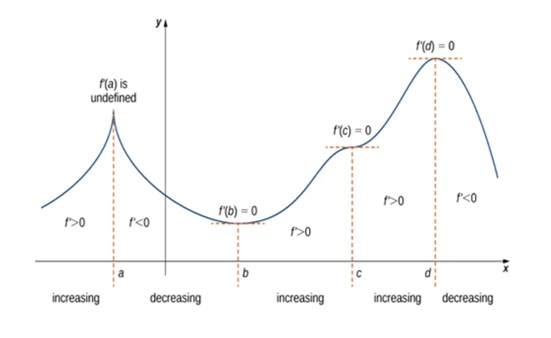
Downloads
Published
How to Cite
CITATION COUNT
Issue
Section
License
Copyright (c) 2021 Rajendra Kunwar

This work is licensed under a Creative Commons Attribution 4.0 International License.





